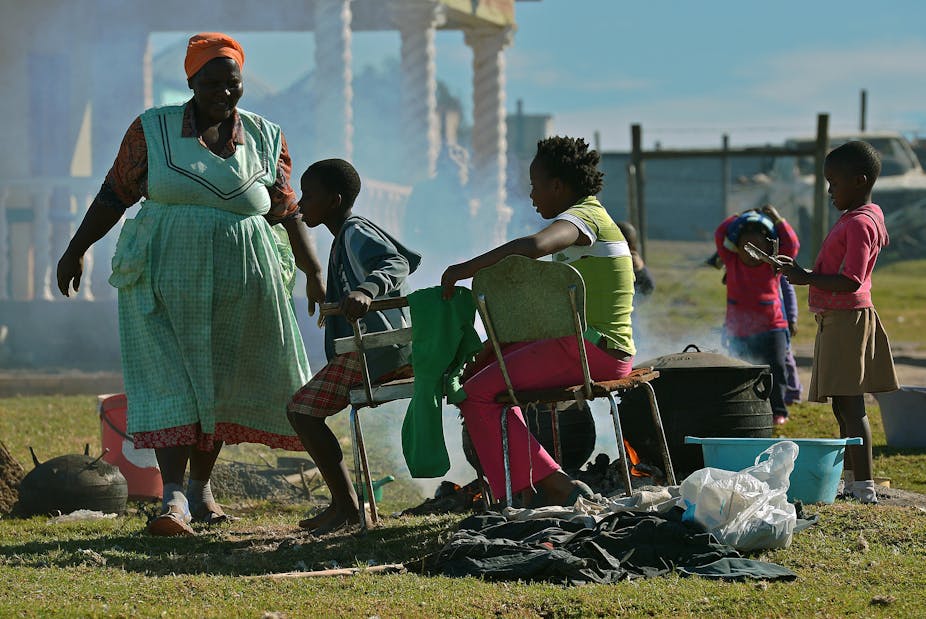It’s hard to imagine that the sustainable development goals (SDGs) and the fourth industrial revolution can be part of the same conversation.
But, as a briefing paper by the World Economic Forum in collaboration with PricewaterhouseCoopers (PwC) points out:
Over 70% of the 136 SDG targets could be enabled by technology applications already in deployment.
To be achieved, both ideas – sustainable development and the fourth industrial revolution – require innovative thinking and a change of attitude.
The fourth industrial revolution is defined by many as a period of rapid evolution caused by digitalisation, globalisation and technological innovation. It has been happening over the last decade and people are finally starting to take notice, because of its massive global impact.
The United Nations’ development goals present an ambitious roadmap for a sustainable future for everyone on the planet. Some of the 17 goals include ending extreme poverty, ensuring free and quality education, and providing equal universal access to safe drinking water by 2030.
We argue that achieving the development goals will require a fundamental rethink of how people produce and consume goods and services. We argue that bringing together education, the fourth industrial revolution, innovative thinking, strategic resourcing and partnerships increases the prospects of doing this.
To illustrate our argument we have used the example of a small hamlet in South Africa’s Limpopo province. The changes that have been introduced in the area over the past ten years are remarkable.
In particular they speak to achieving the goals of building resilient infrastructure which includes not only access to electricity but also increasing access to information and communications technology.
The context
We argue that advancing sustainable development goals through the fourth industrial revolution starts by prioritising two goals in particular – SDG17 (which is about partnerships) and SDG9 (industry, innovation and infrastructure).
Goal 17 aims to strengthen the means of implementation and revitalise global partnerships for sustainable development. It has five components: finance, capacity building, systemic issues, technology, and trade.
But cross-sector and cross-country collaboration is key. And individuals, non-profit organisations, governments, higher education, and the business sector need to use their resources to jointly solve these global societal challenges and achieve shared goals.
Partnerships must be built on principles and values while placing people at the forefront, especially those in developing countries.
Goal 9 seeks to build resilient infrastructure. It also seeks to promote inclusive and sustainable industrialisation and foster innovation. It’s made up of three important aspects: infrastructure, industrialisation and innovation.
Infrastructure provides the basic physical systems. Industrialisation drives economic growth and creates job opportunities. Innovation advances technological capabilities and prompts the development of new skills.
Increased access to information and communications technology is an important part of the picture. Universal and affordable internet is therefore key.
Access to reliable internet and infrastructure such as electrical power are some of the first and most important components towards realising technologies powered by the fourth industrial revolution.
First smart rural village
One real-life example is South Africa’s first smart rural village: Gwakwani. Populated by about 70 to 100 villagers, Gwakwani is in the northern part of the Limpopo province in South Africa.
A decade ago, Gwakwani had no running water or electricity. Internet access was non-existent.
In 2014, the University of Johannesburg’s School of Electrical Engineering started working with the village chief and local council. The goal was to introduce critical improvements to the village:
Diesel borehole pumps were replaced with solar borehole pumps.
A network of taps and tanks was installed.
Solar lights were installed in villagers’ homes and solar streetlights were installed.
A solar bakery was built, where bread and other baked goods are made and sold.
Large cold storage units were installed.
A solar-powered crèche was built for the village’s youngest residents.
Sensors have been put in place all over the village, and data is fed back to a system that can be monitored from the university. This contributes to engineering education.
This remote monitoring system is made possible through the “internet of things” network connection that the university developed in partnership with global communications provider Sigfox.
The internet of things allows data collection and exchange between devices and systems. It can include interactions between humans and machines. This data exchange uses identification, data capture and communications technologies.
The internet of things is expected to have a significant impact on the economy and society, with estimates of up to $11.1 trillion per year in economic value by 2025.
We can observe a few things here:
A transdisciplinary partnership between the University of Johannesburg’s School of Electrical Engineering, the village chief, and the local council was established.
A cross-sector partnership between the university, Schneider Electric and Sigfox was also established. Fourth industrial revolution technology was then installed in an area that previously had no access to any form of technology.
The population of Gwakwani is only about 100 people. Imagine what would happen if many other villages like Gwakwani were given the same technological resources to help them improve their lives.
Future benefits
The work co-created in Gwakwani shows that by bringing together education, the fourth industrial revolution, innovative thinking, strategic resourcing and partnerships, the prospect of achieving the development goals will improve.
Achieving them will have a positive ripple effect on all aspects of society. This is because they provide an opportunity to address the root causes of many development challenges faced by Africa.
The continent is home to many of the world’s poorest and most vulnerable people, and achieving the SDGs would go a long way in improving their lives. It would also help to ensure that Africa’s natural resources were sustainably managed, and that the continent’s wildlife and ecosystems were protected.

